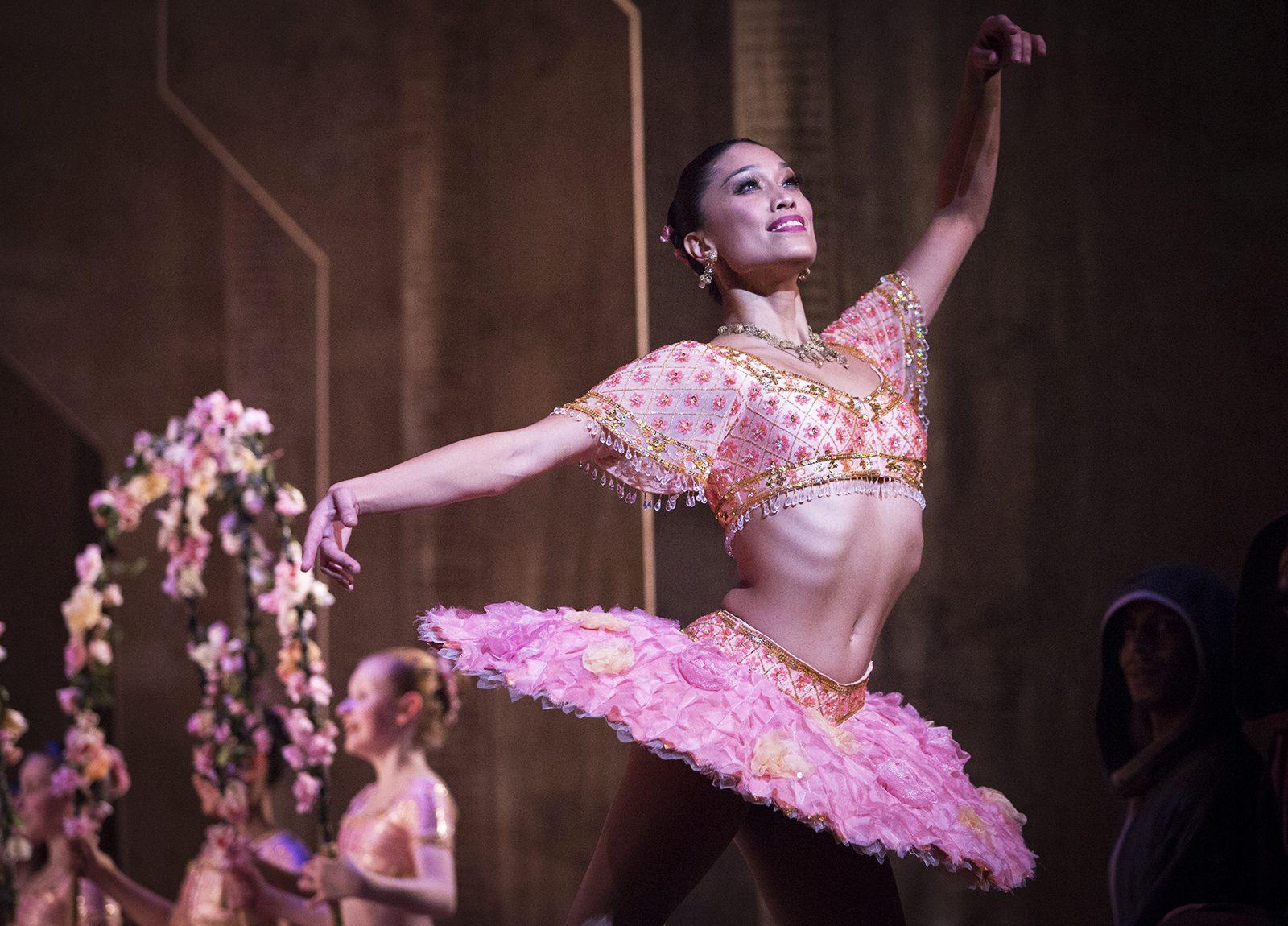[mediagrid cat=”34220″]A deafening silence draped over the crowd in the Boston Opera House as the lights dimmed and the curtains rose. A boat full of pirates in a stormy sea appear behind the scrim, only to be later replaced by a jovial marketplace scene soon after. The set is then replaced with rugged cave walls, then the grandiose architecture of a royal palace. From scene to scene, the audience is left immersed in the unique narrative of the ballet, “Le Corsaire.”
Boston Ballet’s production of “Le Corsaire,” choreographed by Ivan Liška, premiered at the Boston Opera House on Thursday and runs through this Sunday. Despite its short engagement, several members of the Boston community made the journey out to Boston to see this one-of-a-kind performance.
Ashley Ellis, a principal dancer at the Boston Ballet who plays the role of Medora at select performances, described how she brought one of the ballet’s main characters to life.
“I learned the steps, and the people setting the ballet described their idea for the character,” Ellis said. “It’s kind of a process in that way. Once we get on stage, it all comes together with the sets and costumes and everyone around. It really gets you into the excited mode of performing.”
The excitement to see the final product complete with set and costumes was not only felt by the performers, but the audience as well.
Pamela Humphrey, 71, of Back Bay, said she has been going to ballets at the Boston Ballet for 40 years, so she has observed changes made over time and knows a lot about ballet. The scene was set with the careful detail that went into the costuming and lighting, only adding to the beauty of the ballet as a whole, she said.
“The sets are also simpler in a way, and beautifully done, while not overdone,” Humphrey said. “Lighting adds the mood and fills in. It created anticipation.”
The anticipation extended to the plot of “Le Corsaire,” as it embodied features unlike most ballets. “Le Corsaire” set itself apart from the traditional crowd of conventional storylines and tutus.
“This has an edge to the story; an adventure with exotic twists — corsairs, harems, exotic places,” Humphrey said. “You don’t have the standard tutu or a more European or period look to it.”
The seemingly ageless look to the ballet enabled it to be adapted into a more modernized version, as the original version of the ballet was first performed in the late 19th century. Doug Fullington, the dance historian for “Le Corsaire,” said that although he had the majority of the original choreography documented, certain changes were made to modernize the aesthetic of the dances.
“There are a lot of differences from the production that was written down with the choreography that was written in the 1900s,” Fullington said. “The ballet has a long performance history, and changes were made to the ballet: dances were omitted, dances were added, steps were changed.”
In general, he said, the steps 100 years ago were smaller and faster, but today’s movements are focused on “really large jumps or larger-scale movements.”
But keeping up with these modern techniques was no small task. As more types of dance began to develop since the ballet’s original performance, dancers’ bodies, in turn, must adjust to the challenge to effectively capture the appealing visual nature, Humphrey said.
“Because we dance classical, neoclassical and contemporary ballets, our dancers’ bodies are very resilient and flexible,” she said. “So it requires a vast knowledge, body and artistic discipline to dance a certain ballet as it was meant to be done and to be able to move from one form to another effortlessly and artistically accurately.”
Aside from renovating the choreography, interpreting the ballet from its 18th-century form had its challenges as well.
“When you’re dealing with choreography that was written down by someone who is no longer around, you won’t be able to ask them any questions,” Fullington said. “You really have to go about it so that you can find the answer yourself.”
Despite the challenges, the directors of the ballet pulled through, as the benefits of adapting the ballet outweighs the drawbacks.
“It is important for the art form to evolve to reach audiences in a way they can relate,” Humprey said. “Even the real classics have gone through choreographic changes as modern dancers develop capabilities that dances of old did not have.”
“Le Corsaire” is full of romance and suspense to appeal to any lover of the arts.
“What I like about the show is that it’s different than most ballets because of how much action there is,” Ellis said. “Pirates and kidnapping and love and murder. There’s just so much going on. It’s just so much fun as Medora to be in the middle of it and be a part of it all.”


















































































































